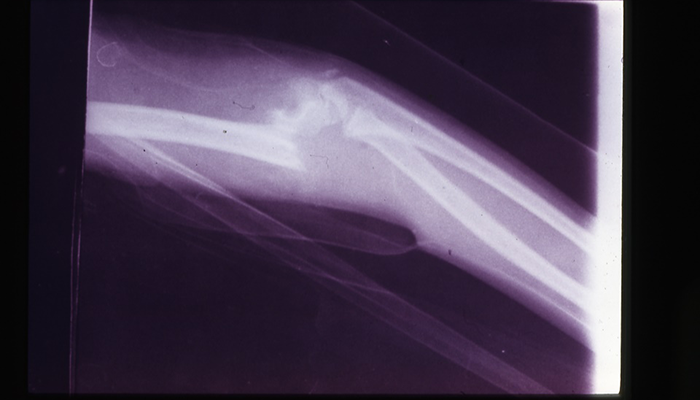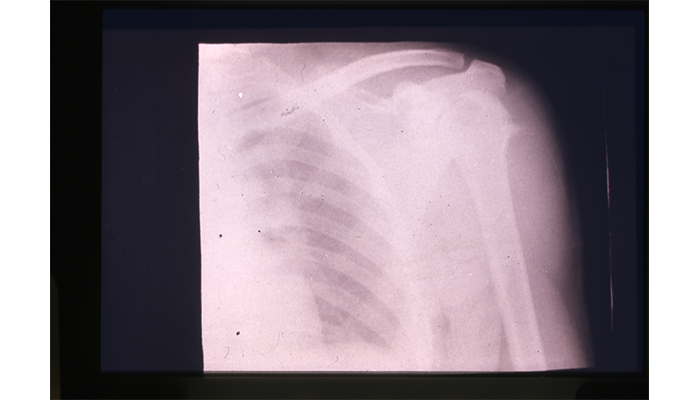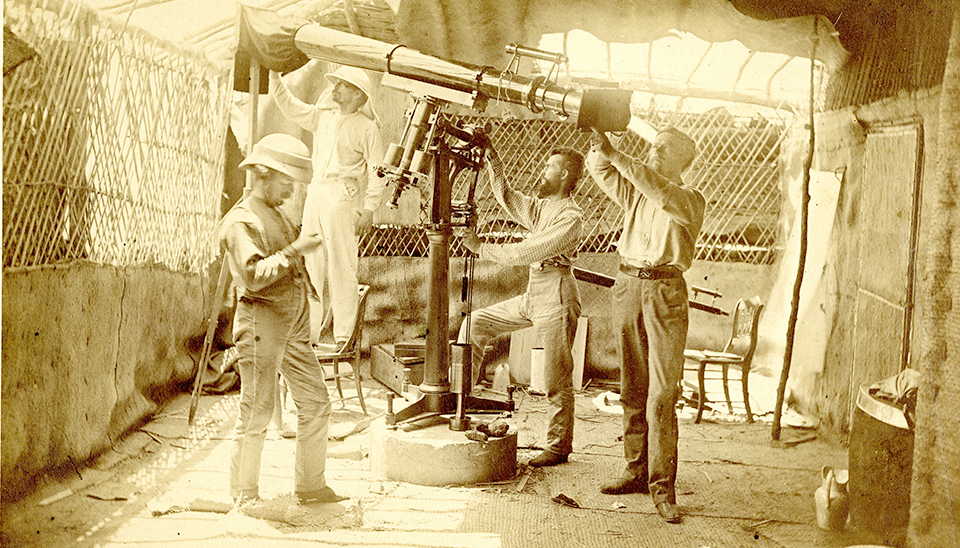In honor of National Volunteer Week (April 19-24, 2020), we are highlighting the work of one National Museum of Health and Medicine volunteer, Frank Bruno, M.D., and his contributions to a permanent collection in the Otis Historical Archives: the Swan Vietnam Slide Collection.
In 1970, Kenneth Swan, M.D. (1934- 2014), a trauma, thoracic, and vascular surgeon, was sent on a special assignment by the Walter Reed Army Institute of Research to Vietnam to document the surgical management of combat causalities using color photography. The result of this assignment is the Swan Vietnam Slide Collection, consisting of more than 200 cases containing 6,500 transparencies.

A U.S. soldier with the 25th Infantry Division sustained a fractured right tibia and fibula following a jeep accident in October 1970, in Cu Chi, South Vietnam. He was taken to the 12th Evacuation Hospital and treated there by Maj. Edwin Kayser. The plaster cast is applied with the surgeon holding the reduction while the cast man applies the cast. (Swan Vietnam Slides, 135-8)
In Frank Bruno's own words:
I retired from an active medical practice in 2011 and soon after became a docent at the National Museum of Health and Medicine. I am a Vietnam veteran having been a Flight Surgeon in South Vietnam throughout 1970. I was stationed in Bien Hoa, South Vietnam, which was only a few miles from the 12th Evacuation Hospital in Cu Chi where Swan was tasked with documenting trauma surgery at the hospital. Due to my background, I was asked by one of the archivists if I would be interested in reviewing this collection and helping put it in a digital format.
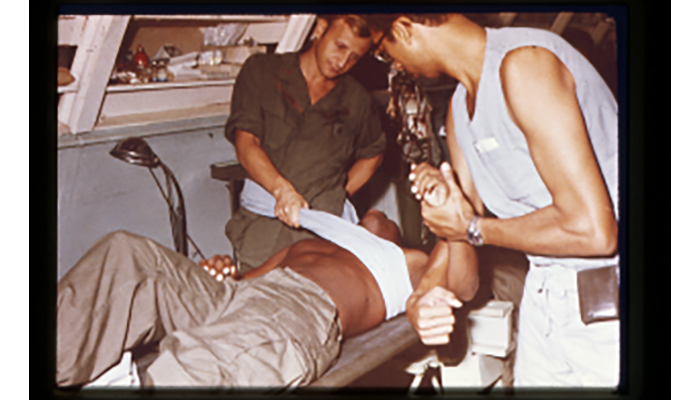
A U.S. soldier of the 25th Infantry Division sustained an injury to his left shoulder when his armored personnel carrier ran over a land mine. The patient was taken to the 12th Evacuation Hospital where he was treated by Maj. Edwin Kayser. Pressure is maintained as the second surgeon applies traction to the flexed elbow on the injured side of the patient. (Swan Vietnam Slides, 135-4)
Between 2015 and 2018, I examined the slides in this collection, assured caption information on each slide was accurate, confirmed roll numbers and surgical case numbers of the collection prints, and, finally, rehoused slides into new, opaque sleeves with transcribed information. As I reviewed each slide, I couldn't help but feel like I was in the operating room standing alongside the dedicated surgeons. Through the slides, I witnessed the efforts the operating room staff made to repair the damage from bullets, shrapnel, landmines, hand grenades, booby traps, mortars, and vehicle accidents. The patients varied from U.S. soldiers to South Vietnam soldiers, Viet Cong soldiers (both men and women), and a variety of South Vietnamese civilians, including women and many children from age four to 12.

The meticulous attention to repairing damage to the causalities was very evident as I studied each and every slide in this collection. The physical and emotional trauma being suffered by the various patients is very apparent. What the surgeons and the operating room staff went through day after day from caring for patients with such extensive wounds of the war is not so apparent.
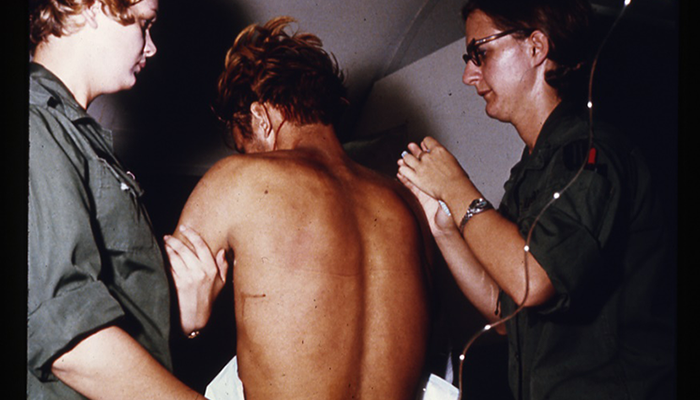
A rifleman with the 25th Infantry Division was wounded by a landmine in October 1970. He sustained multiple fragment wounds to his face, trunk and extremities. He was taken to the 12th Evacuation Hospital in Cu Chi and treated in the emergency room by physicians, nurses and corpsmen. This picture shows examination of the entire body was performed to be certain no wounds were left undetected. (Swan Vietnam Slides, 69-11)
Once putting the collection in a digital format is completed, it will serve as an invaluable source for future researchers interested in military medicine and, specifically, in war trauma's effect on the human body.
Although I never met Swan while we both served in Vietnam in 1970, I join many of my colleagues who revere him as a scholar, teacher, and talented surgeon. I am proud to be a part of this worthy project.
The National Museum of Health and Medicine offers a variety of volunteer opportunities throughout the year in support of educational programs and collections research. All volunteers are part of the Army Volunteer Corps and will receive an orientation and training. If you are interested in becoming a museum volunteer, visit: https://www.medicalmuseum.mil/index.cfm?p=education.volunteers or contact the museum for more information.
Resources
Want to become a museum volunteer?
https://www.medicalmuseum.mil/index.cfm?p=education.volunteers
U.S. Army Medical Department. "12th Evacuation Hospital, 1 January 1970 – 15 November 1970." Office of Medical History. Last modified Sept. 2, 2009. https://achh.army.mil/history/book-vietnam-12evacarjannov70



